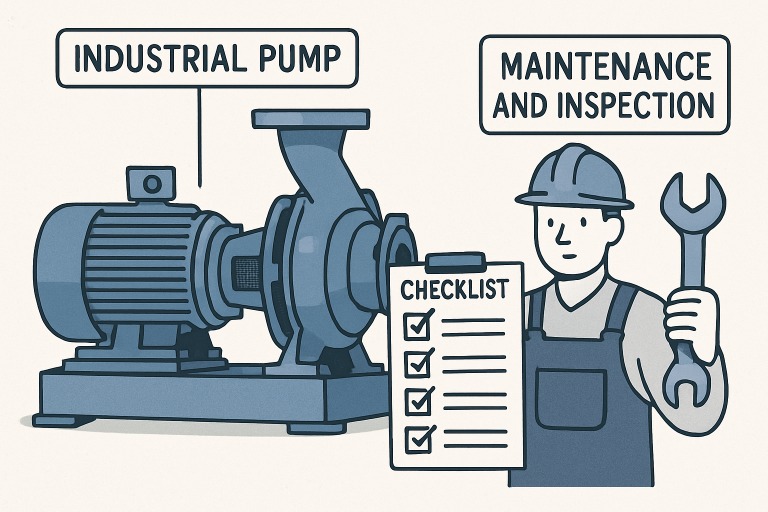Why Preventive Maintenance Matters for Industrial Pumps
In industrial environments, pumps are essential assets that keep critical systems running—making breakdowns not only costly, but also disruptive to operations and safety. Preventive maintenance, which involves performing routine servicing and checks before issues arise, stands in stark contrast to reactive repairs that occur only after a failure. By prioritizing preventive strategies over emergency fixes, facilities can maximize uptime, reduce expensive reactive work, and prolong equipment life.
A robust maintenance program directly benefits operational efficiency and cost savings. Partnering with experts like https://cbeuptime.com/ ensures access to advanced pump solutions and expertise that target reliability and performance, helping facilities avoid costly interruptions. When maintenance becomes a regular habit, minor issues are easier to spot before they develop into major breakdowns.
Key Elements of a Pump Maintenance Plan
Creating an effective industrial pump maintenance plan starts with scheduled inspections and regular lubrication routines. Establish a schedule for checking and servicing pumps based on manufacturer recommendations, operating hours, and environmental conditions. To maintain optimal performance, routine lubrication, filter replacement, and component checks should be included.
Maintaining comprehensive records of maintenance activities, repairs, and performance data enables teams to identify reliability trends. By reviewing historical records, unexpected vibration, temperature, or throughput changes can be quickly flagged and investigated. Tracking this data streamlines troubleshooting and supports regulatory compliance—an important aspect for many industries.
Inspection Checklist: What to Look For
- Noise and Vibration Monitoring: Sudden or unusual sounds are often early warnings of misalignment, unbalanced components, or internal wear. Vibration analysis tools can identify developing problems before they escalate.
- Seal and Bearing Checks: Inspect for leakage, excessive heat, or wear marks. Failing seals often lead to leaks, while worn bearings can cause vibration, misalignment, and energy waste.
- Wear and Corrosion Indicators: Check housings, impellers, and other wetted parts for signs of erosion, scaling, or corrosion, which can compromise pump efficiency and lifespan.
- Visual Inspections: Never underestimate visual cues. Check for loose connections, evidence of misalignment, and the overall condition of the pump and surrounding area regularly.
Effective Lubrication Strategies
Selecting the right type and grade of lubricant is fundamental to pump reliability. Always consult the pump manufacturer’s oil or grease viscosity specifications, and follow recommendations based on load, temperature, and application. Over-lubrication can be as harmful as under-lubrication, potentially leading to overheating or contaminated bearings.
Best practices include cleaning lubrication ports before applying grease, monitoring oil levels, and following a strict schedule. Lubrication intervals depend on operating conditions but should be outlined and tracked as part of the overall maintenance program for each pump.
Common Industrial Pump Problems That Maintenance Prevents
Regular maintenance is your strongest defense against significant pump failures. Some of the most common issues that a solid preventive program can deter include:
- Cavitation and Overheating: These often result from improper suction conditions and can quickly destroy impellers if left unchecked. Timely intervention and routine inspections help prevent this type of catastrophic failure.
- Seal Failures and Leaks: Routine checks and timely seal replacement combat fluid loss and contamination, preventing environmental and safety hazards.
- Real-World Examples: Industry studies show that organizations with established maintenance routines experience up to 25% less downtime than those who rely on reactive repairs.
Training and Safety Tips for Maintenance Teams
Effectively maintaining industrial pumps requires skilled technicians who are up-to-date on the latest maintenance protocols and safety procedures. Employee training should cover pump design, common failure modes, and the use of diagnostic tools. Safety is paramount, so ensure all team members are familiar with personal protective equipment (PPE) requirements and follow strict lockout/tagout protocols before any maintenance work.
Using Technology for Predictive Maintenance
Modern predictive maintenance leverages sensors, vibration analytics, and real-time data monitoring to catch developing pump failures well before they interrupt operations. Installing remote monitoring systems allows teams to track temperature, vibration, flow rates, and other critical indicators around the clock, providing valuable insights and alerts when performance deviates from the norm.
Building a Culture of Reliable Maintenance Practices
Maintenance success depends not just on procedures but also on organizational culture. Encourage operators and technicians to provide continuous feedback, share observations, and suggest improvements. An inclusive approach helps teams adapt their maintenance strategies to unique system challenges, fostering greater reliability and engagement.
Strive for continuous improvement: regularly review practices, adjust maintenance intervals, and stay updated on the latest findings in pump performance and reliability. Engage personnel at all levels to build lasting commitment to equipment uptime and operational excellence.
Long-Term Benefits of Smart Maintenance
Smart maintenance for industrial pumps is a disciplined, strategic investment that yields significant long-term rewards. Facilities that embrace regular inspections, record-keeping, effective lubrication, and predictive technology enjoy fewer disruptions and better cost control. By placing a premium on team training and safety, and fostering an environment of communication and continuous improvement, organizations can achieve greater uptime, optimized performance, and a solid return on their maintenance investment. Consistent preventive care keeps pumps running smoothly and your bottom line healthy for years to come.


